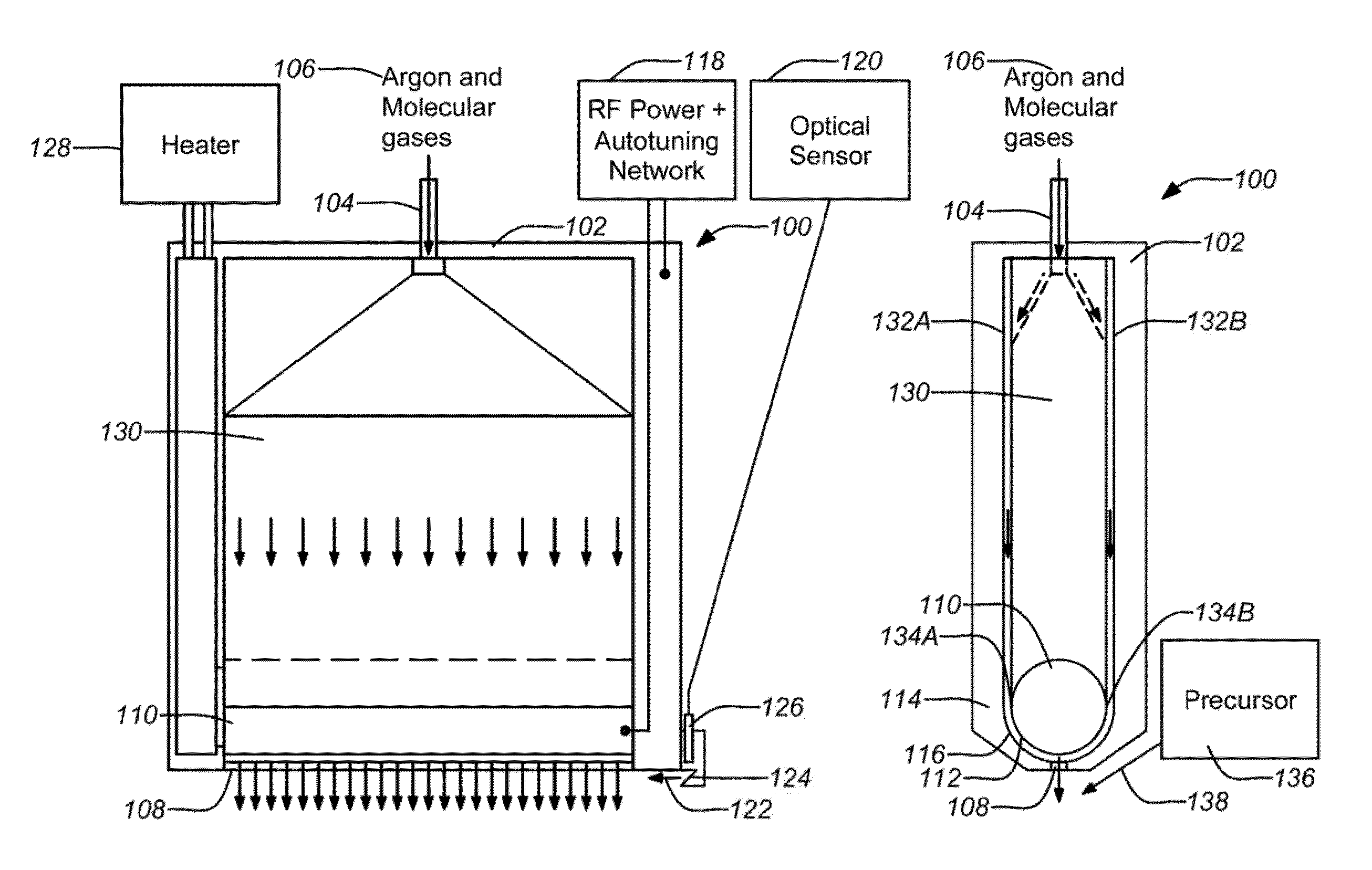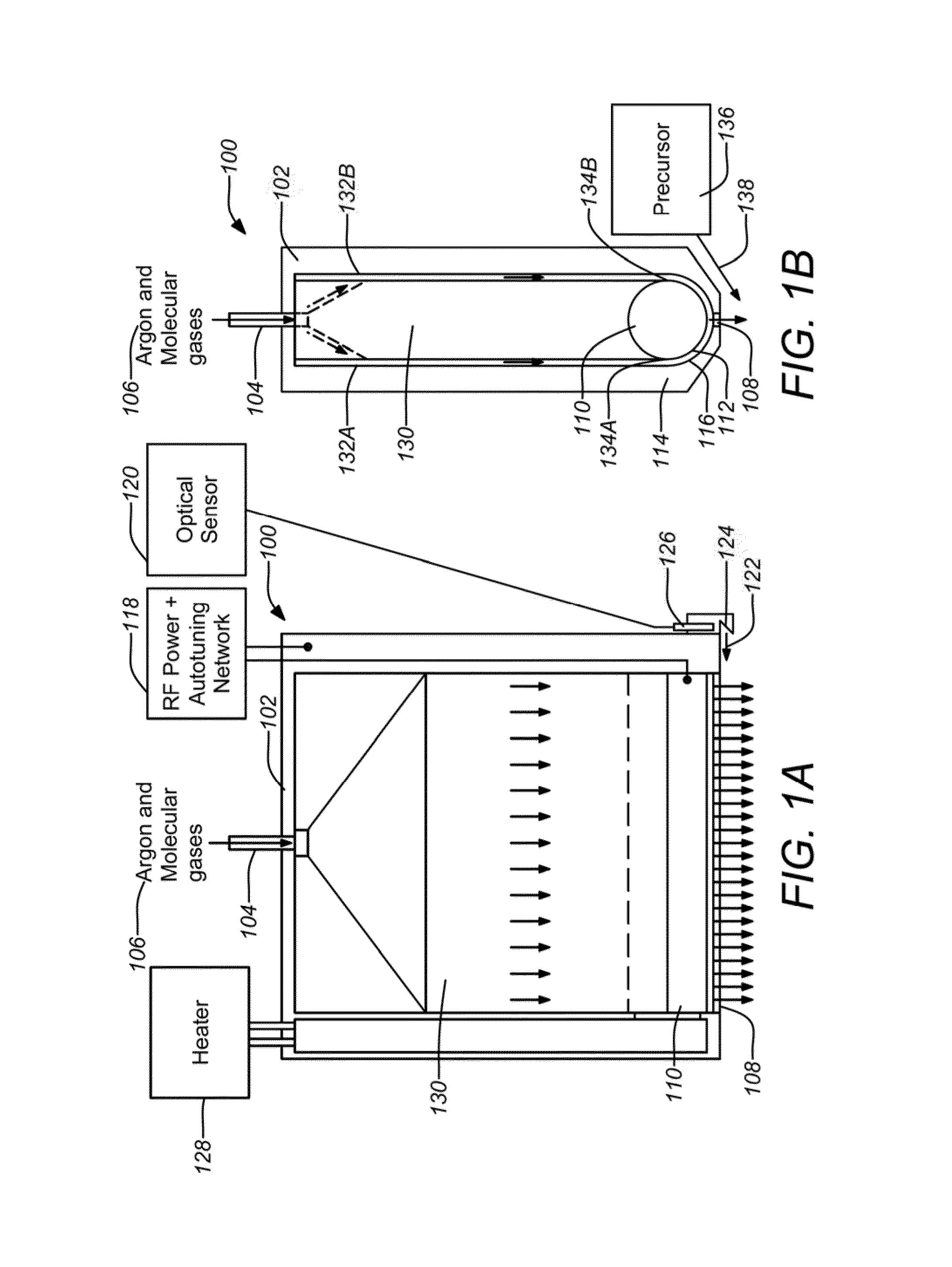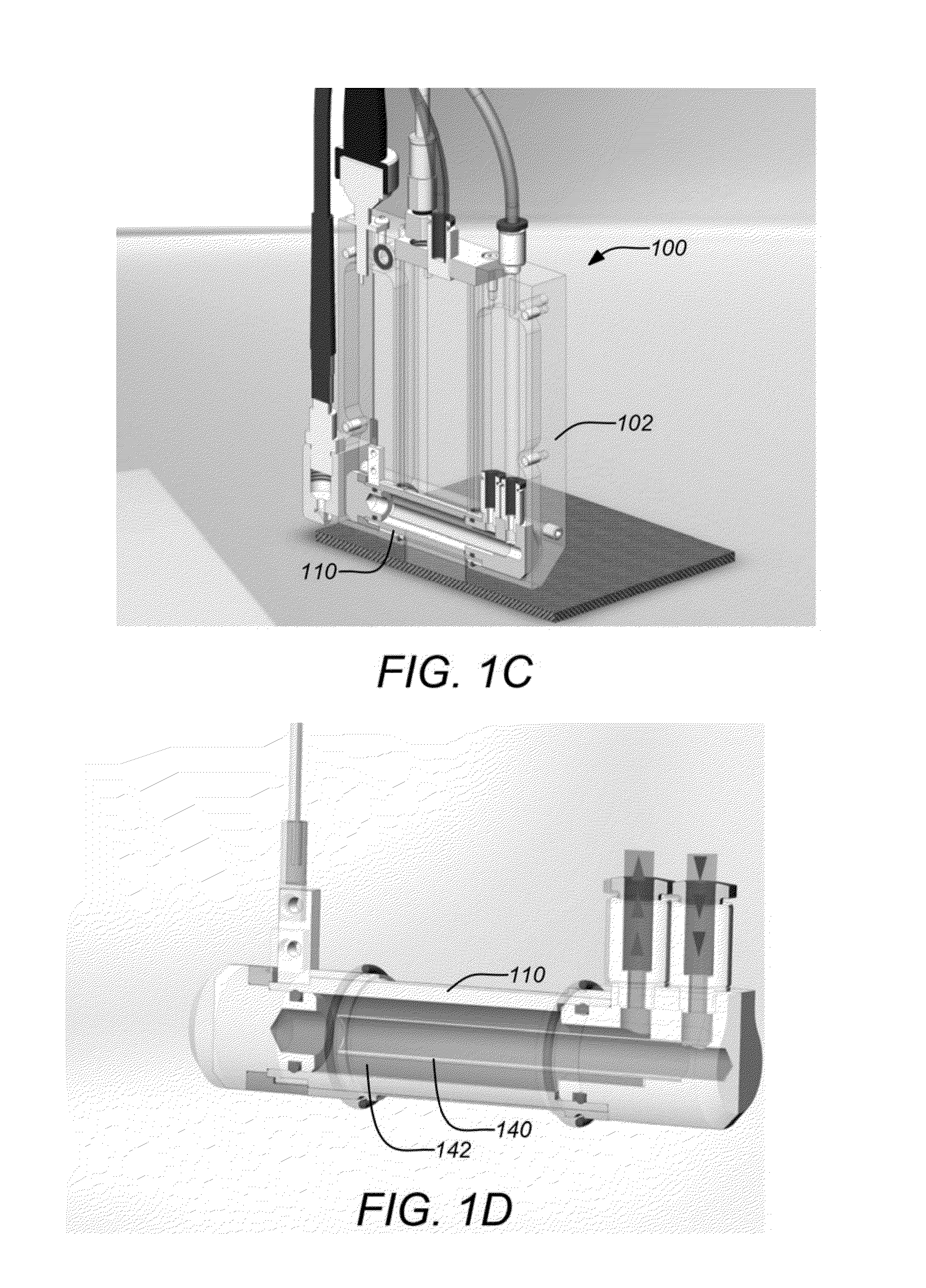Argon and helium plasma apparatus and methods
a plasma apparatus and helium technology, applied in the direction of electrical apparatus, electric discharge lamps, electric discharge tubes, etc., can solve the problems of not being able to measure the average electron density and electron temperature for the entire gas volume, not being able to uniformly treat substrates downstream of dbd with plasma on the micro scale, and not being able to achieve material processing. useful, the effect of increasing surface energy and promoting adhesion
- Summary
- Abstract
- Description
- Claims
- Application Information
AI Technical Summary
Benefits of technology
Problems solved by technology
Method used
Image
Examples
example 1
Method of Cleaning Substrates
[0105]The atmospheric pressure argon plasma may be used to remove organic compounds from surfaces, thereby cleaning the substrate. The method of cleaning surfaces is accomplished by flowing argon gas containing reactive molecules through the plasma to convert the molecules into atoms and other reactive species. This gas flow is directed onto the surface to be cleaned. The contaminated surface is exposed to the reactive species generated in the argon plasma for a sufficient period of time to cause organic contamination to be removed without damage to it. A sufficient period of time can be an exposure to the reactive gas for 0.1 second to 1.0 hour, and generally in the range of 1.0 second to 1.0 minute. Since the atmospheric plasma may be scanned over the surface, the total treatment time may be longer than the aforementioned time periods for especially large substrates. Moreover, it may be advantageous for the contaminated surface to be scanned with the a...
example 2
Method of Surface Activation for Adhesion
[0110]Another example of how one may practice an embodiment of the invention is to modify the surface of plastic or other materials. For example, the argon plasma apparatus can be used to enhance the wettability of a surface. To demonstrate this, a number of materials were treated and the wetting behavior quantified before and after processing by water contact angle (WCA) measurements. A hydrophobic material can be made hydrophilic by treating it with the atmospheric pressure argon and oxygen plasma. A high water contact angle (>80° C.) results in a surface that will repel aqueous coatings and adhesives. A water contact angle of less than 45° means that the surface is hydrophilic. A hydrophilic surface accepts adhesives, paints, inks and coatings, which will come into intimate contact with the surface and adhere to it. These substrates will adhere much more strongly and robustly than an untreated hydrophobic surface allowing for greater relia...
example 3
Method of Etching a Substrate
[0120]Another embodiment of the invention is etching of materials, including glass, metal and polymer films. For example, organic films may be etched by exposure to the argon and oxygen plasma. Whereas glasses, metals and metal oxides may be etched by exposure to the afterglow from the plasma apparatus fed with mixtures of argon and halogen-containing molecules, including, but not limited to, chlorine, nitrogen trifluoride, carbon tetraflouride, carbon tetrachloride, and sulfur hexafluoride.
[0121]Another aspect of the invention is embodied in a method of etching Kapton. The etch rate was determined by measuring the time necessary to etch a hole through a 25-micron-thick Kapton film. The Kapton film was placed over a vacuum chuck and a vacuum gauge was used to monitor the sudden change in pressure when the plasma etched through the film. A mixture of argon oxygen was fed into the plasma source and the trends in Kapton etch rate were measured by varying th...
PUM
 Login to View More
Login to View More Abstract
Description
Claims
Application Information
 Login to View More
Login to View More - R&D
- Intellectual Property
- Life Sciences
- Materials
- Tech Scout
- Unparalleled Data Quality
- Higher Quality Content
- 60% Fewer Hallucinations
Browse by: Latest US Patents, China's latest patents, Technical Efficacy Thesaurus, Application Domain, Technology Topic, Popular Technical Reports.
© 2025 PatSnap. All rights reserved.Legal|Privacy policy|Modern Slavery Act Transparency Statement|Sitemap|About US| Contact US: help@patsnap.com



